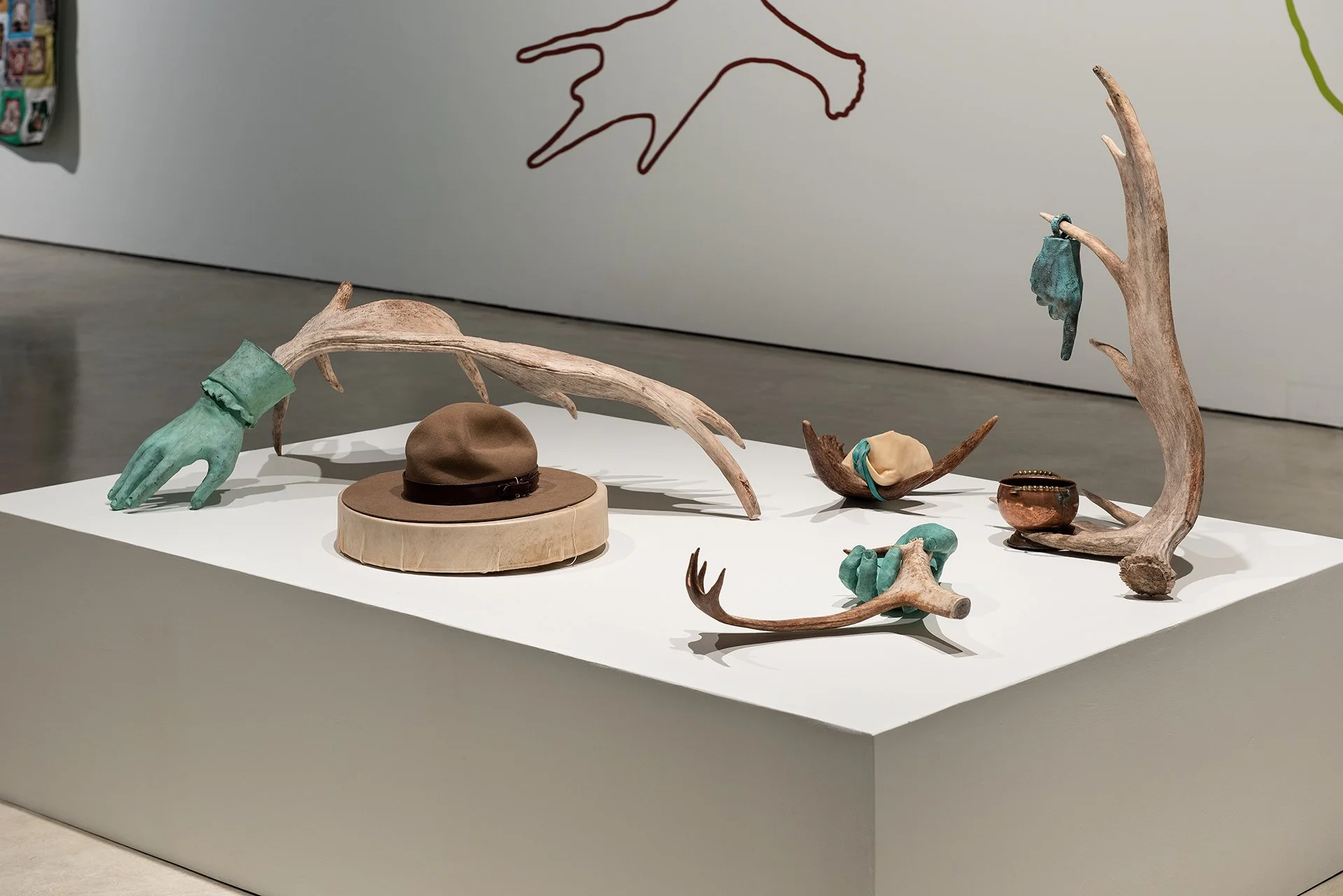
nadyes / you come back
Curated by Amanda Cashia, presented in Crip Ecologies: Vulnerable Bodies in a Toxic Landscape at the Windsor Art Gallery, a co-presentation with Tangled Art + Disability, (Wawiiatanong / Windsor, ON) 2022
Photographs courtesy of the Art Gallery of Windsor
Within nadyes / you come back, Logan MacDonald uses sculptural installation to lyrically fixate on the learning and communication that exists outside colonial norms of communication, and to consider how erasure that is imposed by colonial mechanism can be subverted. MacDonald incorporates bronze strategically as a symbolic signifier to reference the perpetuated colonial narratives and systems imposed on our landscapes and bodies - and the hierarchical ways in which we are expected to teach and learn. He employs these bronze pieces in a dismantled/fragmented state, to subvert their power - absorbing the structures as aides that help form tableaux that support new meanings, histories, perspectives, movements, conversations, teachings. nadyes / you come back is presented as a series of small arranged sculptural installations and imagery traced on the wall. Together they form a large coded assemblage, with each piece, in some way, gesturing to the embodiment of knowledge: how our bodies can learn and teach through movements, vibrations, bodily cues, and how these signals have the capacity to transmit and extend between generations. nadyes / you come back is an attempt to lyrically highlight how we are capable of communicating beyond colonial language, to illustrate how Indigenous, queer, and crip folks have and continue to strategize to communicate our knowledge, needs, desires. How we have lived within the colonial systems, but are able to communicate beyond these limits, to survive in a system designed to ensure our erasure. The shed antler incorporated into nadyes / you come back is an example of MacDonald's conceptual approach, by incorporating this biological material to reference a part of an animal's body that is speculated to help them sonically hear both mates and prey.
Text by Amanda Cashia



